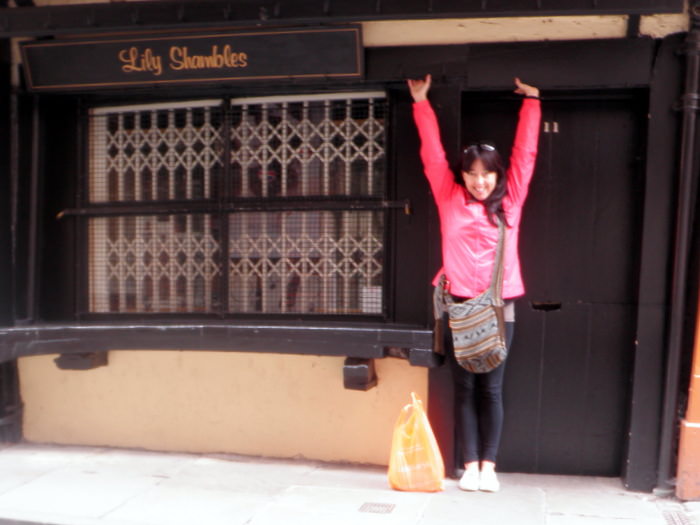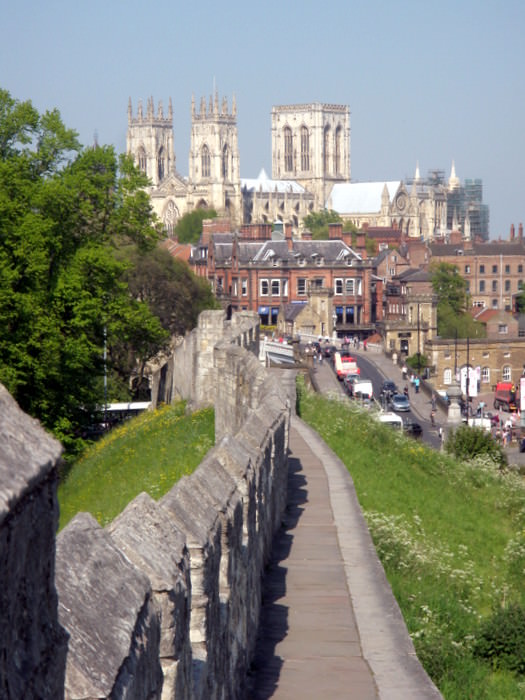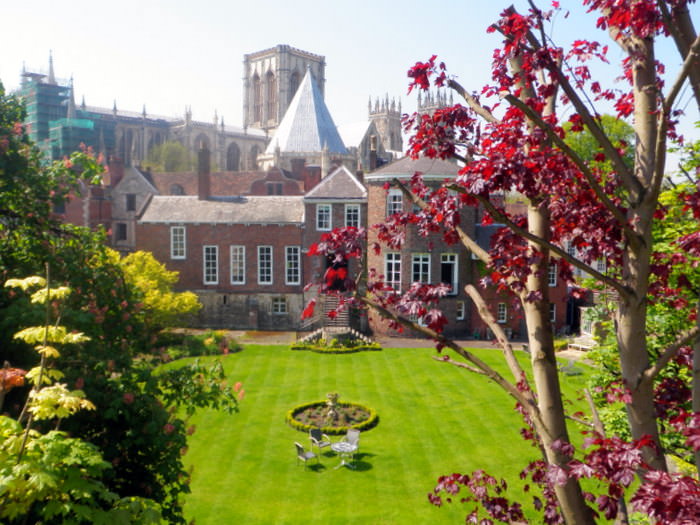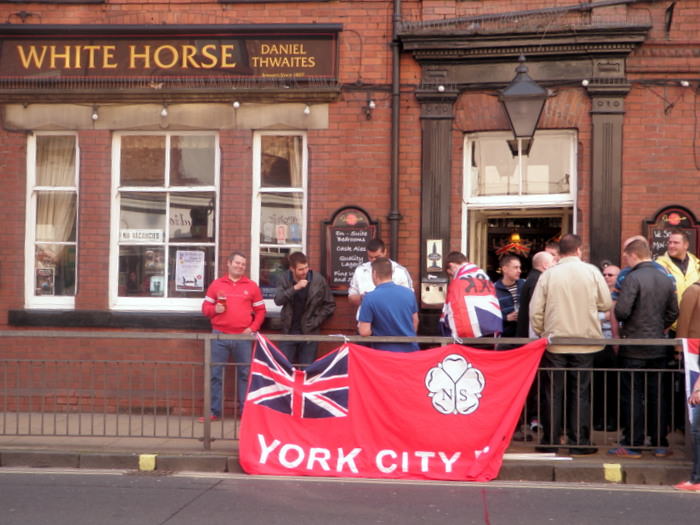My first clue that all was not as it seemed was the cats. I had just arrived in York that morning, with two days to explore before catching a flight out of Leeds. When I asked my friends back in London about York –only an hour away from Leeds – they said it was a pleasant-enough little place, so I decided to take a Yorkshire mini-break.
As the train rolled through the English countryside, I envisioned a quaint, riverside town with Laura Ashley shops and teahouses, where I’d have a nice Sunday Roast and a good night’s sleep. My accommodation in the bed and breakfast on Bootham Crescent, one of many along the winding road, was exactly what I expected: a quiet room with a kettle and tea selection on the nightstand, a full English breakfast and a floral bedspread.
I thought I had this town figured out from the beginning.
But then I started noticing the cats. Across the city, there were at least 20 cat statues in different hiding places; under bridges along the Rivers Ouse and Foss, above the doorways of Boots shops, atop vegetarian restaurants, next door to a house where the infamous Guy Fawkes was reputedly born. No one knows where the first cat statues came from or why, but the oldest is thought to be from the early 19th century and the most recent installed around 2005.
Then someone in York decided to make a tour out of this unique aspect of their city. The self-guided Cat Hunt takes you through the medieval “snickleways” of the old town, where the street names suggest their history; there’s Stone Gate, so-called because when the spectacular York Minster – the largest Gothic Cathedral in Northern Europe – was being constructed, the stones used to build it were dragged along this street. And Grape Lane, once nicknamed “Grope Lane” because medieval ladies of ill repute used to call it home.
My next surprise in York was the pubs. They weren’t cozy English taverns with pub trivia and Sunday Roasts – although there were a few of those as well. Instead, the bars had names like “Evil Eye” – a four-story Gothic lounge with folk art from Mexico City and a playlist straight out of a Camden Town watering hole. Or the “Trembling Madness” a medieval drinking hall where you can sample hundreds of different beers surrounded by stuffed animal heads.
It didn’t stop there. Beside the river was City Screen, an art-house cinema playing a film about a bisexual maniac in South Africa. On a residential street, I found a quirky local art gallery hidden inside a cafe. The newest attraction in town was “Chocolate Story”, a museum dedicated to the long confectionary history of the city, home to Terry’s Chocolate Orange, Kit Kat, Aero and Smarties.
York, needless to say, surprised the heck out of me.
It has been my experience that cities surrounded by fortified walls are special. It’s as though the locals, back when they built the walls, knew their town was worth the centuries of work put into defending them. York is a perfect example. Besides the fun-loving spirit of the locals and its funky underbelly, York is also one of the most historical towns in Britain. A walk along the walls, which stretch approximately 2 miles around, is the best way to see it all.
The walls were built and strengthened over the years by the Romans near the turn of the century, the Normans, Vikings, right up to the Victorians. There are four openings, called “bars”, from which you can enter the old town to check out the sites such as the Jorvic Centre, commemorating York’s Viking history, or the world’s largest Railway Museum.
The walk itself is lovely: it is shaded by trees and overlooks sprawling gardens below. At one point, it winds past the suburbs, where you can see laundry hanging outside stone houses and residents having tea in their garden. At another, you can descend to explore the tragic history of Clifford’s Tower, and then climb up again at the Monk Bar, which houses the Richard III Museum where you can learn the story of the War of the Roses, which was a battle between the houses of Lancaster and York for the throne of England.
My leisurely wall walk took all day to complete, and by the end, I was ready to hit the streets where there seemed to be a lot of locals gathering in the main town square. It was a familiar scene: colourful banners, people in matching shirts drinking pints of beer and hugging each other. Chants ringing through the streets, sung by men and boys in accents I can barely understand in speech, nevermind in song. The smell of beer and wooden bartops. Laughter, singing, and rowdiness. Something soccer-related was going on here.
Two days earlier, I’d witnessed a similar party in London, when Chelsea Football Club beat Bayern Munich to win the Champions League. For serious football fans, the Champions League is as important as the World Cup, so when Chelsea became the first London-based club to win the competition, the city went crazy. A parade of fans, supporters, and hangers-onto a good party like me turned the streets and pubs of Chelsea and Fulham into a jubilant sea of bright white and blue.
But today, in York, I was pretty sure they weren’t celebrating the same party. York is only three hours away from London, but a world apart where football loyalties are concerned. “What’s going on here?” I whispered to a woman on the periphery of the cheering crowd. I hoped she wouldn’t judge my ignorance quite as harshly as a man might.
“York City just got promoted up from the Conference League. They’re back in Division Four again after eleven years!” I smiled, offered congratulations, and didn’t dare ask what any of that meant until later that night in the pub, over a couple of Yorkshire Terrier ales with a couple of locals. “Here, let me draw you a diagram, it’ll be easier,” Brian said, grabbing a napkin and pen. Five minutes later, he presented a flowchart to me.
“It’s really simple. There are four levels in the Football League. The Premier League, or Division One, is where you’ll find the big-time teams like Manchester City, Manchester United, and Chelsea. Then you have the Championship League, Division Two, where you’ll find Leeds, West Ham, Southhampton. Then there’s League One, and League Two, and then under that you have the Conference, which is actually non-league. York just got promoted back up to the football league, into the Conference.”
I stared blankly.
“Basically, York just got a promotion,” he said, putting away the flowchart, and we toasted the football club, and the fabulous city itself.
Written by Andrea MacDonald for EuropeUpClose.com.











My Big Greek/Turkish Cyprus Adventure
Tuesday 14th of October 2014
[…] leaving the lovely city of York, England, I flew with Jet2Airlines into Paphos, Cyprus – one of the two major airport hubs […]
My Big Greek/Turkish Cyprus Adventure | EuropeUpClose.com
Wednesday 10th of April 2013
[...] leaving the lovely city of York, England, I flew with Jet2Airlines into Paphos, Cyprus - one of the two major airport hubs in the [...]